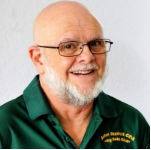
This is the fourth in a series of four articles on the mortgage interest deduction. (Read Part I, Part II, and Part III) Reverse mortgages have become increasingly popular as a vehicle for retired taxpayers to help fund their retirement. It’s hard to watch TV very long without seeing a pitch for reverse mortgages. What are the characteristics of a reverse mortgage, what are the tax implications, and what do taxpayers need to be aware of in regard to these loans? These are sometimes referred to as lifetime mortgages or home equity conversion mortgages (HECM).
When obtaining a reverse mortgage, the homeowner continues to occupy and retain title to the home. The homeowner receives money from the lender as a lump sum, a monthly advance, a line of credit, or a combination of the three. Amounts received are nontaxable loan advances on a home equity loan.
The balance becomes due when the loan period ends, when the owner moves, reaches a specified age, sells the home, or dies. The older you are, the more you can borrow. Lower interest rates also allow for a larger loan. Mortgage interest accrues on the reverse mortgage proceeds. However, the interest is not deductible until actually paid, which usually occurs when the balance is paid off.
Fees associated with a reverse mortgage can be rather large. The fees can be treated as an advance on the loan, reducing the amount available to be withdrawn. For a $300,000 house, the fees can be expected to be in the neighborhood of $7,500. There are three types of fees involved:
- Origination fee paid to the lender. This is 2% of the first $200,000 and 1% of the amount over $200,000, with a maximum of $6,000. This fee is regulated by the Federal Government.
- Third party fees. This includes numerous small fees such as an appraisal, title search, and inspection fee.
- An upfront mortgage insurance premium. Normally this is o.5% of the property value and goes to the FHA. Over the life of the mortgage borrowers must also pay an annual mortgage insurance premium of 1.25% of the loan balance.
Deductibility of these fees follows the same rules as a regular mortgage. However, they must actually be paid and not rolled into the loan. To be eligible for a reverse mortgage, you must:
- Be 62 years of age or older.
- Own you home and use it as your primary residence.
- Have a single-family or multi-family (up to four) residence or an approved condo or manufactured home.
- Own the home unencumbered by a mortgage or one with a small balance.
- Have the house in good condition prior to taking out the loan.
While this may sound like a good idea, there are some reasons to stop and think before obtaining a reverse mortgage:
- As mentioned the fees are usually very high.
- The interest rate is normally higher than for traditional loans.
- Your heirs might not get the house. When you die, the home is typically sold to cover the loan amount. In order to keep the house, the heirs must purchase it.
- When you move out, the loan becomes due.
- You remain responsible for home costs – property taxes, insurance, repairs, and similar items.
Reverse mortgages can meet a need for some senior citizens. However, there are many factors that must be evaluated prior to entering into such an arrangement.























Recent Comments